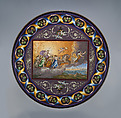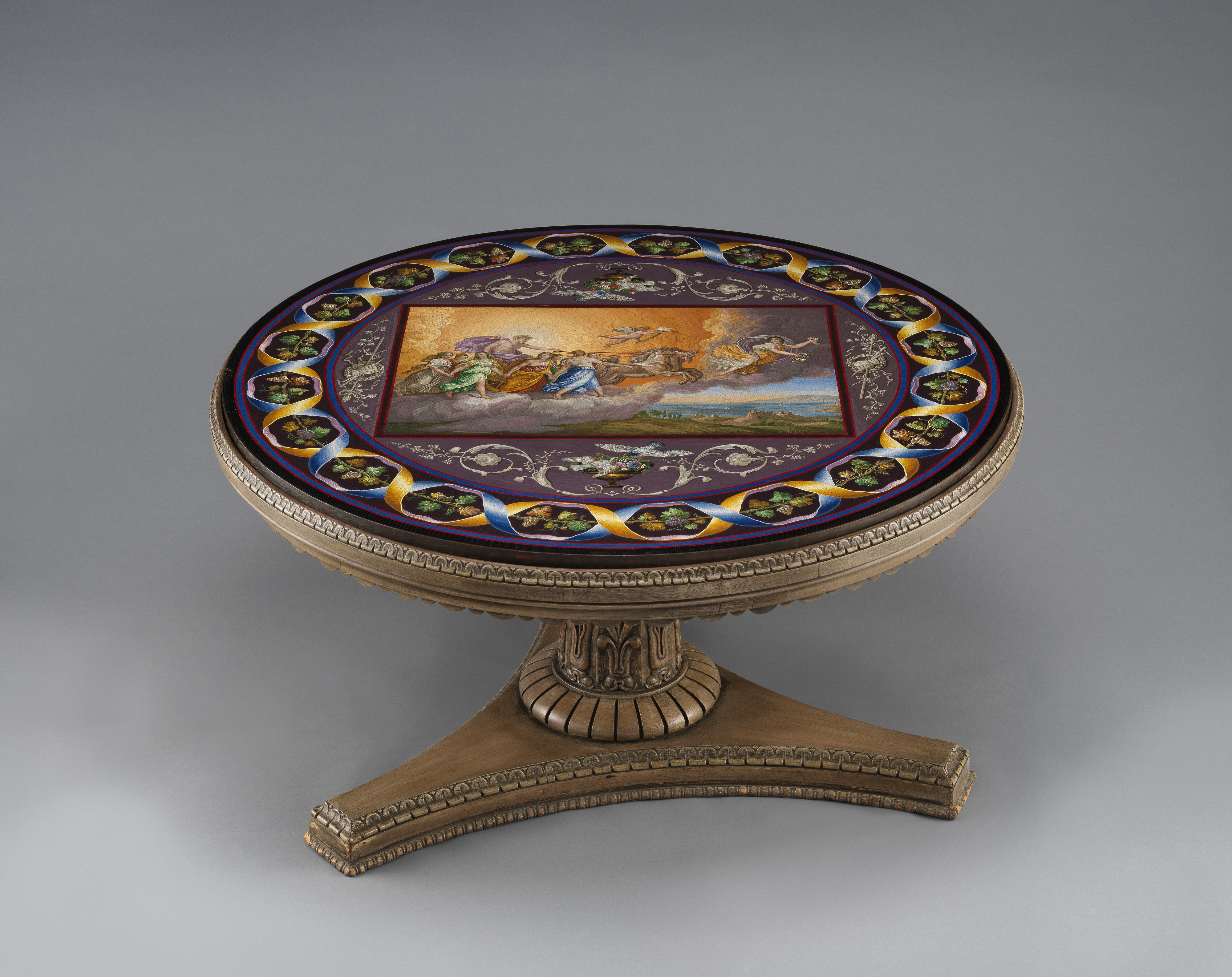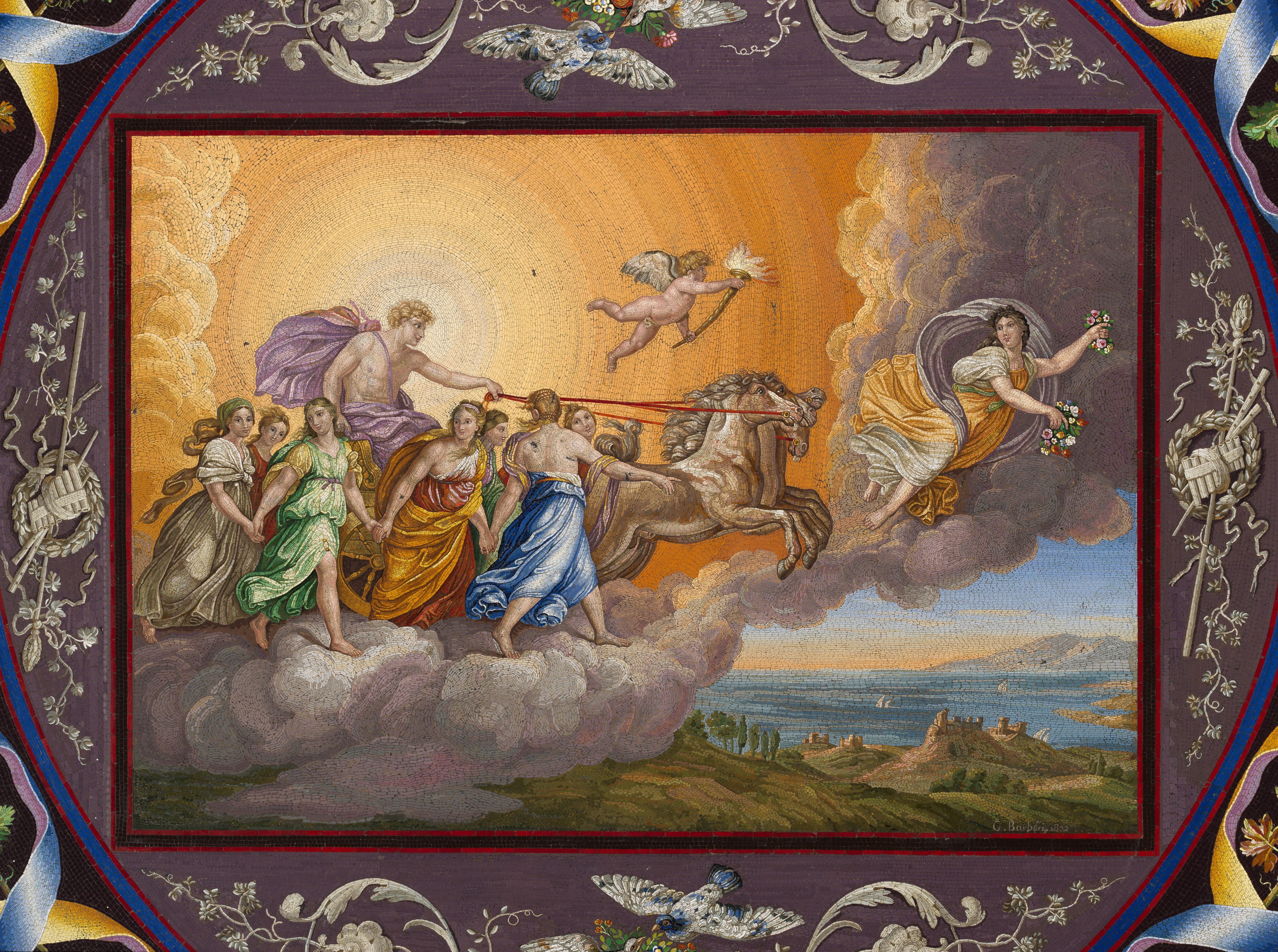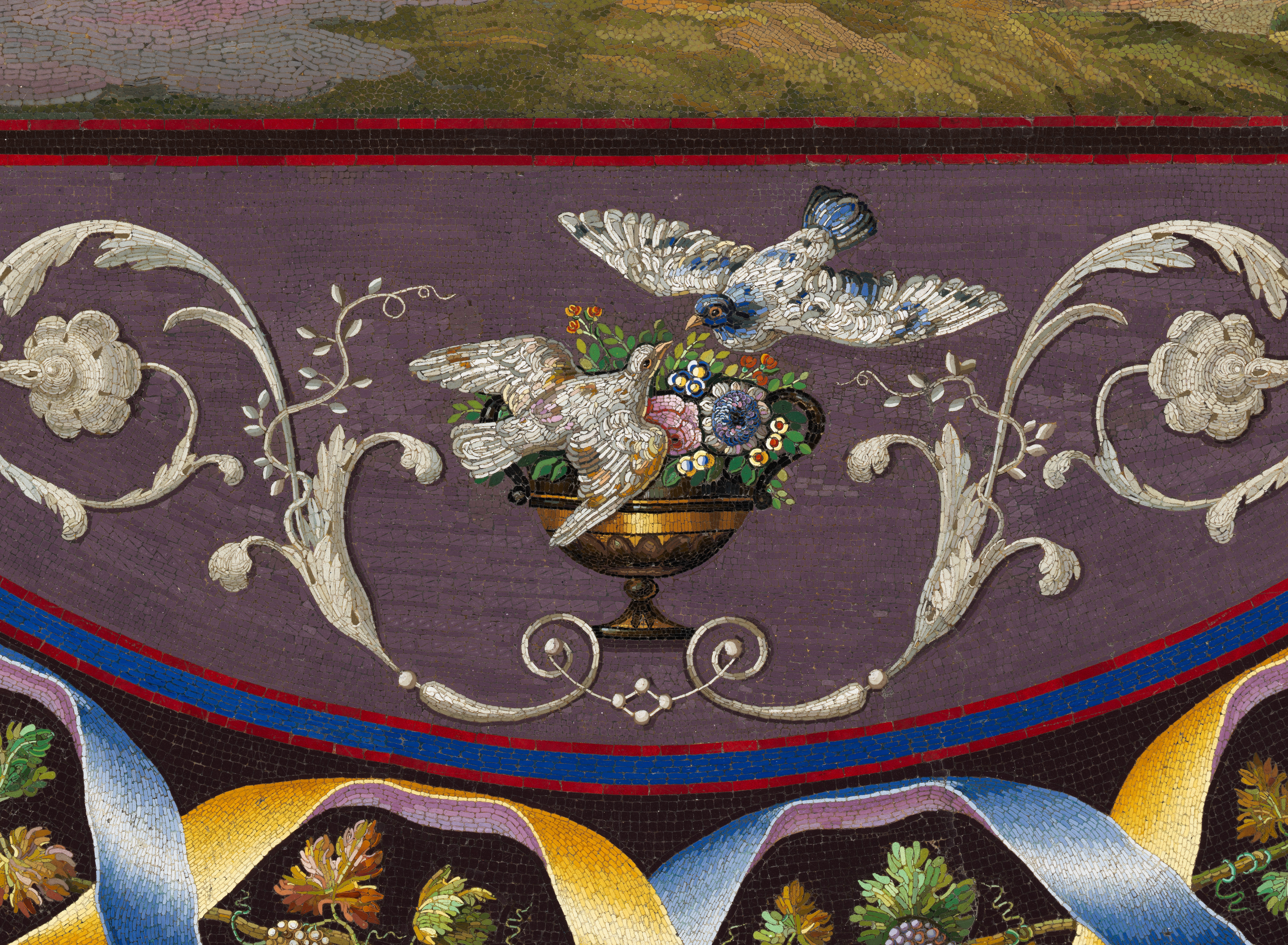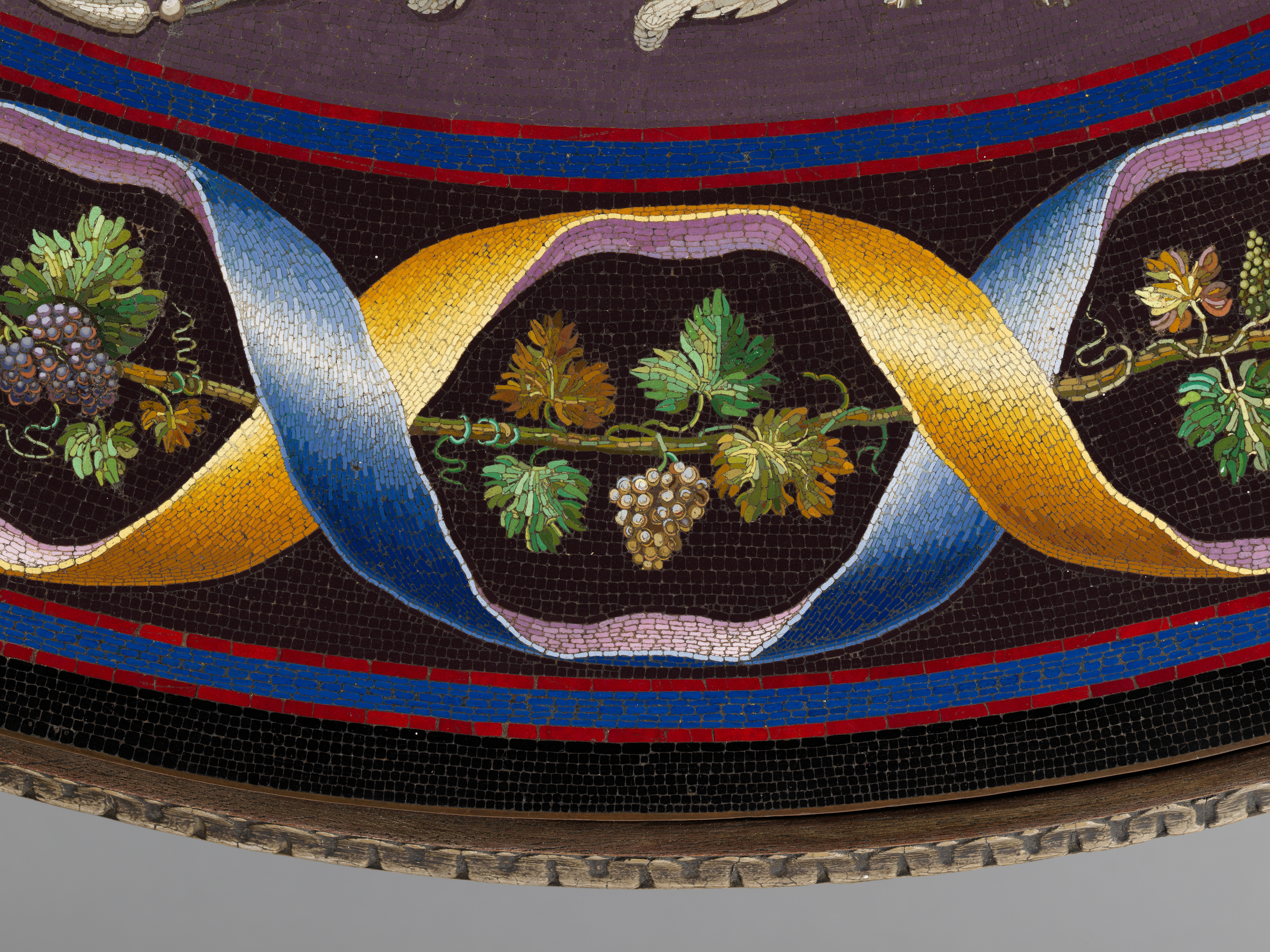Table top depicting Aurora and the Chariot of Apollo
Gioacchino Barberi Italian
After a composition by Guido Reni Italian
Not on view
After the popularity of mosaics in ancient times, the technique had a second great period in late eighteenth and early nineteenth century in Rome. Affluent tourists were the patrons of a new working technique that transformed antique prototypes in being meticulously assembled with much smaller glass tesserae, a celebrated craft today known as micromosaic. This unusually large example depicts Aurora, after the ceiling fresco by Guido Reni (1575–1642) in the Pallavicini-Rospigliosi Palace in Rome. The ambitious composition is flanked on either side by Dionysian trophies, with birds fluttering above kantharoi filled with flowers framed by scrolling acanthus vines. Red and blue bands form a border of intertwined yellow and blue ribbons above a grape vine on a black ground. Contemporaries listed Barberi as one of the leading artists of miniature micromosaics.
Due to rights restrictions, this image cannot be enlarged, viewed at full screen, or downloaded.
This artwork is meant to be viewed from right to left. Scroll left to view more.
